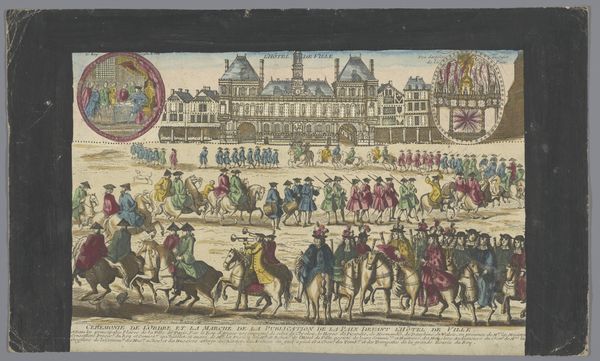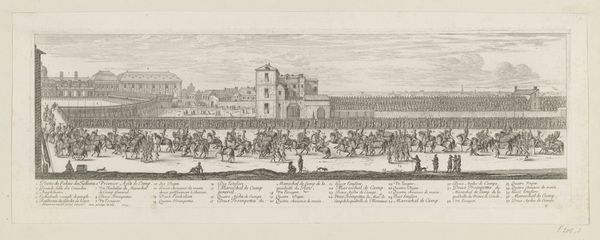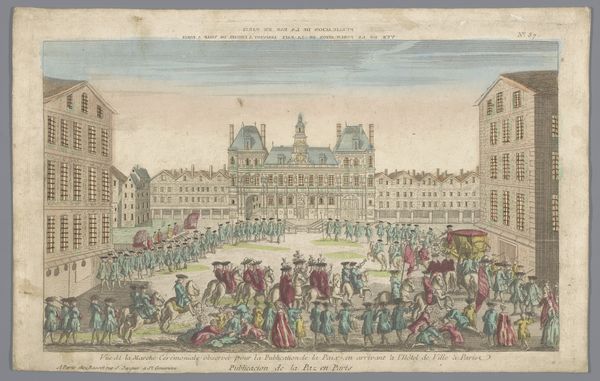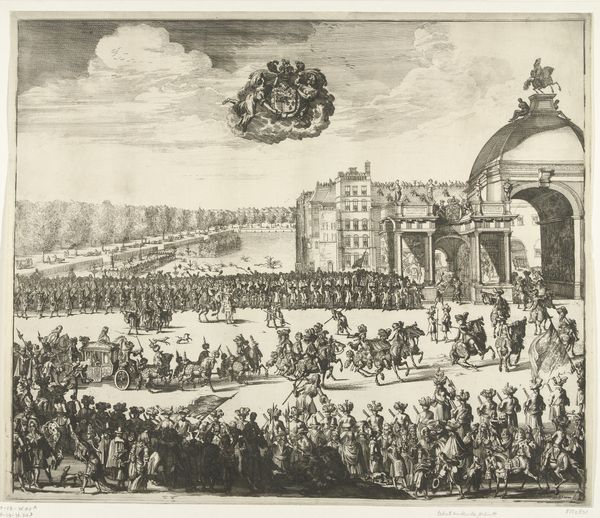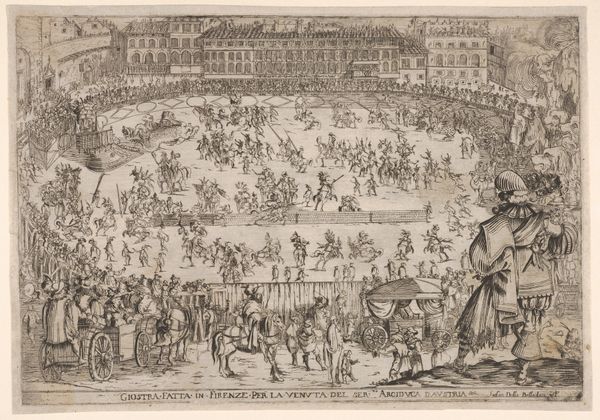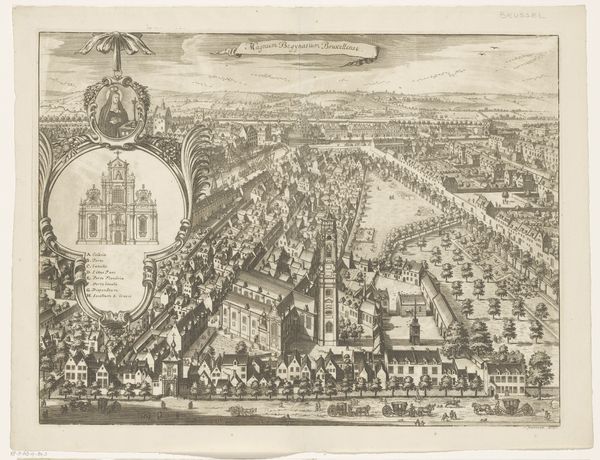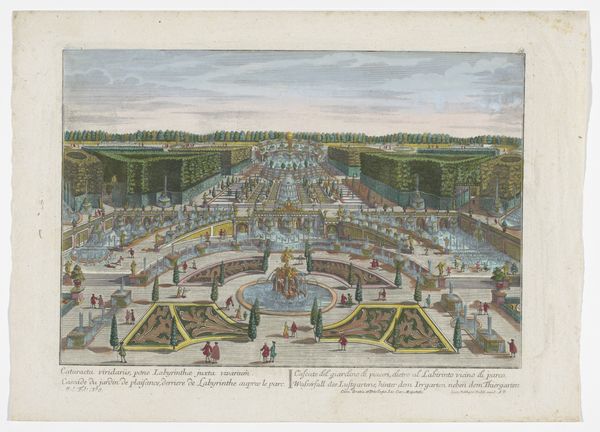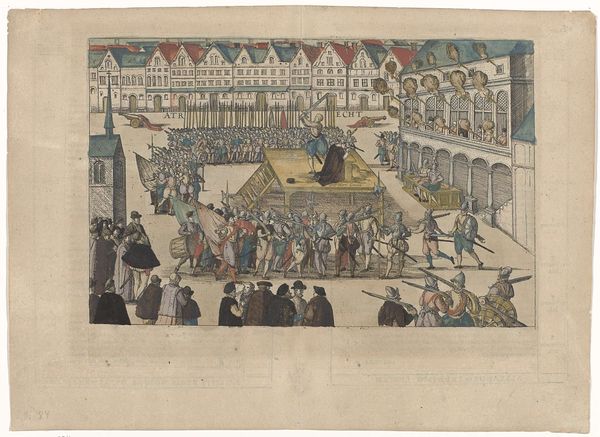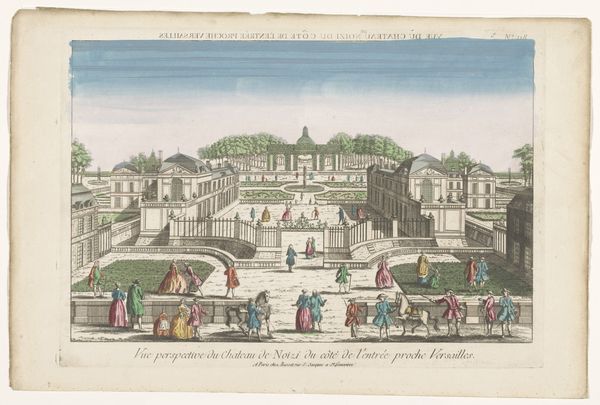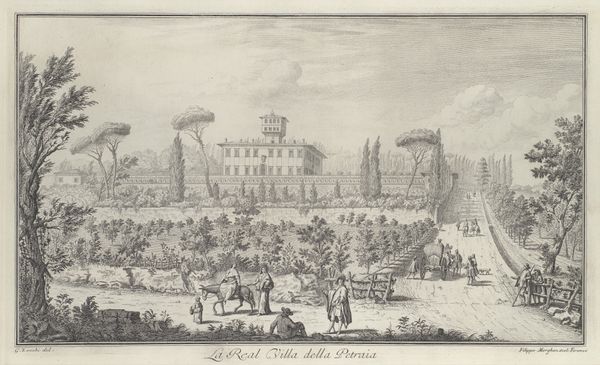
Gezicht op de Place de Louis XV te Parijs met een stoet ter afkondiging van de vrede 18th century
0:00
0:00
basset
Rijksmuseum
print, engraving
#
baroque
# print
#
landscape
#
cityscape
#
history-painting
#
engraving
#
rococo
Dimensions: height 259 mm, width 379 mm
Copyright: Rijks Museum: Open Domain
Curator: The Rijksmuseum holds this 18th-century engraving titled "Gezicht op de Place de Louis XV te Parijs met een stoet ter afkondiging van de vrede," depicting a procession announcing peace in Paris. Editor: It’s fascinating how much detail the artist was able to capture with such a medium. What really strikes me is the almost celebratory, yet rigidly ordered atmosphere. How do you interpret this work within its historical context? Curator: This image is a window into the performance of power in 18th-century France. The “peace” being celebrated was likely born of conflict rooted in empire and oppression, masking the social realities for so many. Consider the perspective. Does the artist, through their depiction, uphold or subtly critique the ruling class? The procession, the architecture... It's all carefully constructed symbolism. Editor: So, it's not just about documenting a historical event but also about understanding its role in the political and social landscape. The Place de Louis XV itself becomes a stage, in a way. Curator: Precisely. The artist makes choices about what to include and how to depict it. How does the inclusion of the crowd and Louis XV himself and their scale affect our understanding of the scene? The print aesthetic itself flattens what would have been an overwhelming 3D spectacle. The composition highlights how political announcements work, too, to keep populations invested in regime maintenance. Editor: That makes me think about who the print was intended for. Would it have been widely distributed, and to what extent might that circulation have reinforced these power structures? Curator: It's highly likely this print served as a form of propaganda, a way to disseminate a particular narrative about the monarchy and its power. Thinking about it this way allows us to see this work as a powerful political artifact. Editor: That’s given me a new appreciation for how seemingly straightforward historical depictions can be interpreted through lenses of power, class, and even media dissemination. Thanks for broadening my perspective. Curator: My pleasure. Remembering that art always operates within a complex web of social and political relations deepens our appreciation.
Comments
No comments
Be the first to comment and join the conversation on the ultimate creative platform.
